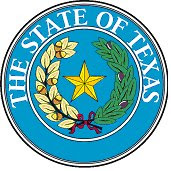Generally speaking, I wouldn't advise trying to survive a SHTF scenario down here, but the Karankawa did manage to scratch out a living.....
Water will be your biggest problem. The Nueces River does run down here, but it is brackish all the way to the low water dam at Labonte Park, just as you enter Corpus Christi from I-37. Oso Creek also runs along the southwest side of Corpus Christi, and it too is brackish for quite a distance upstream.
The area is considered "semi-arid", and rightly so. The average annual rainfall for the area is only 32.26 inches, with September being the wettest month at 5.03 inches on average, and that moisture usually being of a tropical nature. January is typically the driest month at an average 1.62 inches. I wouldn't rely on rain catchment for water here.....
That being said, directly on the coast the water table is fairly high, only 3 or 4 feet in places. Ranchers on Padre Island watered their cattle simply by digging pits a few feet down. This can be done in my back yard in Flour Bluff on the Encinal Peninsula as well (though it is against city "code"). Areas north and west of Corpus Christi Bay typically receive more rainfall, as do the Kingsville and Rio Grande Valley areas.
Land right on the coast is typically sandy loam, with large areas of clay as well. Crops grow well a few miles inland in the rich, brown soil. There is little tree cover from the north shore of Corpus Christi Bay and the Nueces River southward, mostly huisatch and mesquite. North of the bay, live oaks proliferate.
South of the Encinal Peninsula, the King, Kennedy, Yturria, and El Sauz ranches cover most of the land between the Laguna Madre and US 77, all the way to Port Mansfield, about 80 miles as the crow flies. The lone exceptions are Riviera Beach and Loyola Beach on the western end of Baffin Bay, near Kingsville. North and west of Kingsville is brush land, lots of smaller ranches, and little to no surface water.
On the plus side, fish are plentiful! Speckled trout, red drum, black drum, and southern flounder are the major varieties, along with sand trout, golden croaker, gafftop and hardhead catfish, the occasional snook, pompano, and offshore species like whiting, bluefish, king mackerel, spanish mackerel, wahoo, yellowfin and blackfin tuna, red/gray/vermilion/mutton/mangrove/and yellowtail snappers, amberjack, jewfish, strawberry/warsaw groupers, scamp, cobia...... We also have plentiful stone crab, blue crab, oysters, scallops on occasion, brown/white and Gulf species of shrimp, and more.
Migratory birds love this place as well. Many species of ducks and geese winter here, or at least stop by for a while (I hear mesquite grilled whooping crane is delicious! Heh heh heh....). There are many, many resident species of birds here. It's a bird shooter's paradise (both gun and camera).
And there are plenty of game critters here. Cotton tails galore, red squirrels, white tail deer out the wazoo, feral hogs, javelina, cows...... Oops, cows ain't game critters (and shootin' one of those is likely to get you shot back!) ha ha. Anyways, there you have it. South Texas Coastal Bend in a nutshell.....
Subscribe to:
Post Comments (Atom)








5 comments:
Excellent and informative post. Some really good effort went into this one. Thanks a bunch Mayberry.
This post rocks!
RW
Thanks RW.
Yep, pretty much nailed it Mayberry. I'm way down there pressed up against the Rio Grande in Hidalgo county - finding natural water courses is a problem. I've often thought about jetting a well in our backyard, (PVC Pipe with water pressure will dig shallow wells), but was put off by possible litigation of polluting water table. But like you expressed above - still possible - I've often been quoted water table heights in our area of 10 - 15 deep!
Twenty years ago, we were much more agricultural, and winter crops down here were very prevalent. Hard freezes in 1983 and 1989 killed a lot of our renowned citrus crops, and along with NAFTA, caused a lot of the landowners to go another direction.
Urban sprawl, for example - the RGV was (and still is) one of the fastest developing regions in the country. Only now are we beginning to feel the economic pinch most of U.S. has felt. Finding decent priced property is getting very ridiculous, and finding 1 acre lots less than $50,000 within 10 miles of cities is difficult. There is some junk land, but most of that is hunting lease areas - and prices on that is rising fast as well.
My family has lived in this region for at least the past 240 years - both pairs of great great grandparents were born and died here. I guess I'll be the same, though I have to wonder if I'm just too stupid to put up with summers down here, lol.
Thanks for the post.
You know, I forgot to comment on the salt water Laguna Madre. I have to wonder how good life would be if a person had a shallow water boat you could sail along the Intercoastal Canal - all the fish you could eat, right under your hull. Leaves no tracks, no taxable property. I don't think the water freezes solidly (too saline?) so year round mobility.
A bicycle would likely be able to take care of quite a bit of your shoreline supply trips. I understood that in the Great Depression, a whole lot of folks lived pretty well on houseboats that were on the river.
This approach might work out very well for a person and / or family who is content to live very simply. Boats right now are considered luxuries - might be able to scare up a real deal.
I have thought of a boat..... A lot...... And thanks!
Post a Comment